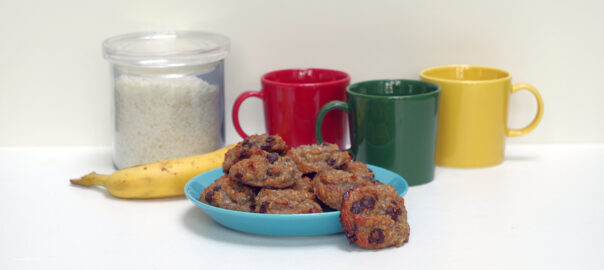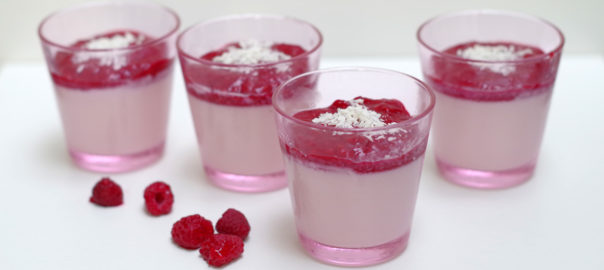Yoga Kitchen – Simple, healthy, and plant-based
Tropical sweet
Even without added sugar, you can hit high peaks in terms of sweetness. These super simple soft biscuits, reminiscent of the archetypal coconut rocks, consist of just two to three ingredients.
Banana takes over the role of egg whites as a texturiser. (Whew!)
You have them prepared in no time.
What ingredients do you need?
For twelve pieces:
- about 340 g peeled bananas
- 75 g grated coconut
- a pinch of salt
- optional: 3 tablespoons of dark chocolate drops
This is how to prepare them:
- Preheat the oven to 165 °C.
- Mash the bananas finely, with a fork or in a food processor.
- Add the coconut and the pinch of salt and mix until homogeneous.
- Add the chocolate drops if wanted and mix well.
- Place a sheet of baking paper on a baking tray and spoon 12 mounds of the batter onto the paper.
- Let bake for 25 to 30 minutes until golden brown.
- Let cool for at least an hour before munching them.
Is all sweet equal before the law?
The human species has a distinct preference for sweet taste. Perhaps because our distant ancestors evolutionarily associated sweet taste with energy density.
In the last 50 years, consumption of sweet and sugary foods has increased dramatically. Many people struggle with obesity, and the incidence of diabetes resulting from unbalanced eating habits has never been higher than today.
Should you therefore ban sweet? No. But moderation is the message. And preferably choose wholefood sweet. Fresh dates, bananas or other fresh and dried fruits not only give us their heavenly flavour, but also bring vitamins and minerals. This, unlike crystallised or powdered refined sugar.
A tip: gradually reduce the sweet level of your dishes, until you learn to enjoy the subtle sweetness of sweet vegetables and cooked grains again. Be moderate with fruit, and prefer the whole fruit rather than just the juice.
What is the true cost of imported tropical fruit?
Imported tropical fresh fruits such as bananas, mangoes and coconut products, for example, have a huge carbon footprint due to long-distance transportation. They are also available all year round, whatever the season. Transport by plane – madness for agricultural products – scores the worst, but transport by ship and truck is also wasteful. Rail transport seems to be the most favourable ecologically for food products.
The origin of food products can give an indication of the means of transport used, although as a consumer you can never be sure.
That is why it is better to consume regional or local seasonal fruit, and to keep a limit on tropical fruit coming from very far away.
Read more about plant-based nutrition and health:
Read more articles about nutrition, health and plant-based foods:
Read more about plant-based food
Read more about yoga and yoga classes in Schaerbeek:
Check out our yoga classes here:


